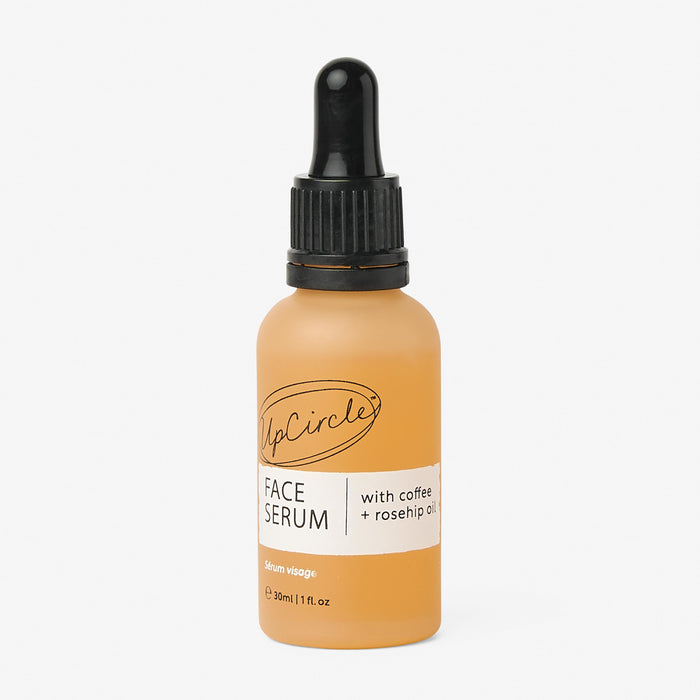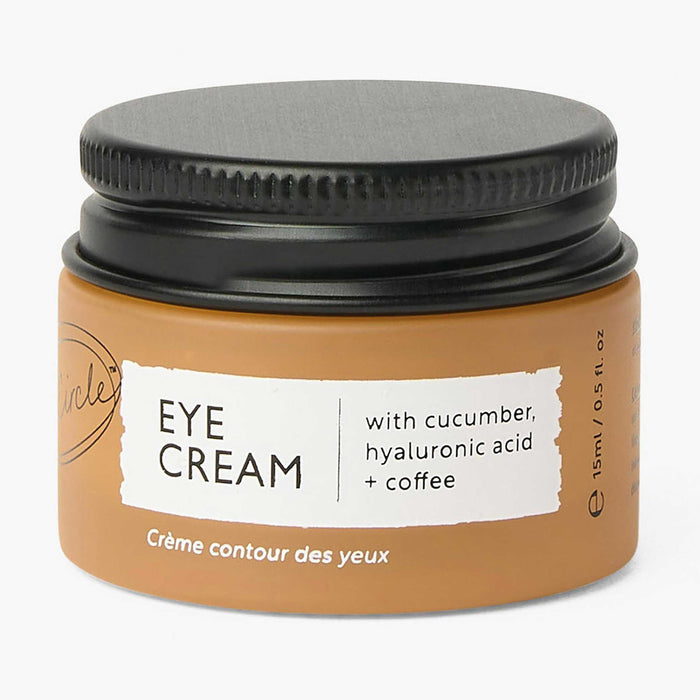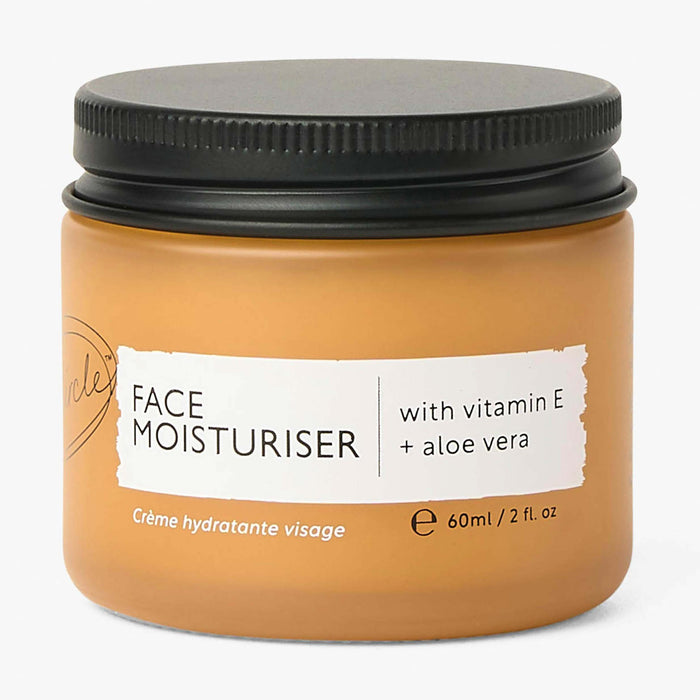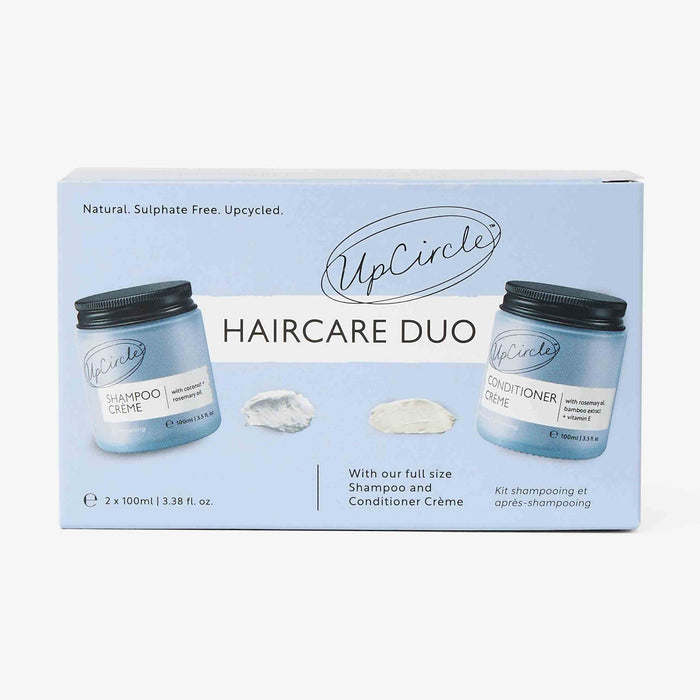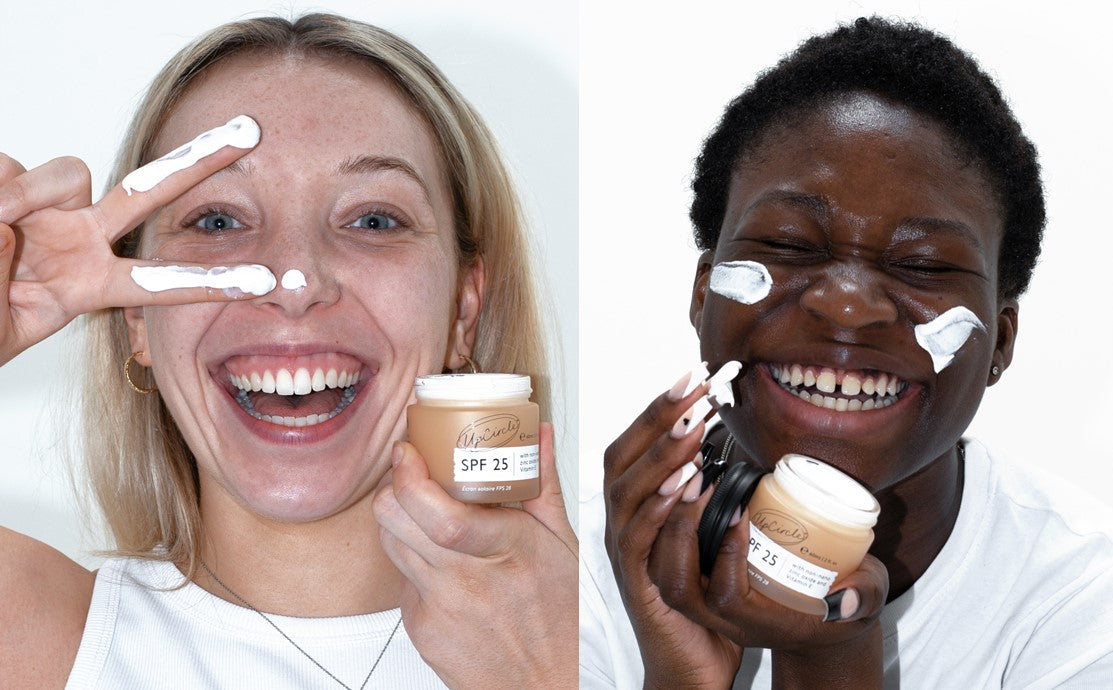We know that UpCirclers are chomping at the bit to get their hands on an UpCircle SPF. It was not a quick process though, as we were determined to bring you the very best SPF product which ticks all of our values (and yours).
In the meantime, we thought we’d share with you why we worked so hard on this product, and everything you need to know about choosing an SPF.
Quick sunscreen 101
There’s a tendency for us to think we know it all when it comes to sunscreen. Let’s just quickly recap so that you definitely know what we’re talking about and why, when it comes to SPF.
SPF stands for sun protection factor. It’s the way we rate sunscreens and it’s the most overt rating you’ll see on most sunscreen packaging. You’ll also have heard the terms UVA and UVB. UVA refers to long wave ultraviolet A and UVB refers to short wave ultraviolet B. UVA rays penetrate deeper into the skin and are often responsible for sunburn. UVB rays damage the outer layers of the skin but can still lead to sun damage. Both types of rays are linked to skin cancer and premature aging.
SPF actually only refers to the level of protection against UVB. But, when it comes to sun protection, you also need to think about UVA rays – especially during the winter months when UVB isn’t really a huge problem for us here in the UK.
If you flip over your sunscreen, there’s often a star rating on the back. This indicates how much protection they offer against UVA. UVA, unlike UVB, can also penetrate glass, and it’s with us in winter too. All the more reason to ensure your SPF helps here as well.
It’s your face that is primarily exposed to sunlight every single day of the year, incidentally, in so many ways.
Why do you need to wear SPF every day and do you really need SPF in winter?
It’s a mistake to only think of skin damage as the raging lobster sunburn when you overdid it on the beach on holiday. Most skin damage is actually cumulative – a little damage happening often, builds up. Each year in the UK over 100,000 new cases of skin cancer are diagnosed . Shockingly, 86% of melanoma cases are preventable. Skin cancers are becoming increasingly common in the UK.
Skin cancer can occur in places not exposed to the sun, but extensive sun exposure is believed to be the main culprit for the vast majority of cases.
Whilst UVB exposure is negligible during winter, UVA exposure happens all year around. That’s why you should be wearing SPF on your face in winter too, every day of the year.
For those worried that daily SPF use will prevent your body getting enough vitamin D from the sunlight, you don’t need to worry. Science has shown that you still synthesise vitamin D when wearing sunscreen.
If cancer risk isn’t enough to spur you on to wearing SPF every day, even in winter, then sun damage also causes ageing. Those wrinkles, discolouration and blemishes are all exacerbated by sun exposure.
Different types of SPF
Sunscreens aren’t created equally.
Firstly, when considering the best SPF for the face you want to choose one with a minimum rating of SPF 25. This will mean that it works against both UVA and UVB to a high level. Our mineral SPF 25 blocks up to 96% sun rays, providing reliable protection.
Secondly, as we know really matters to UpCircle fans, you want to be sure you’re not slathering on a sunscreen that’s packed full of chemicals which aren’t doing your skin any favours in other ways. Therefore, to us, the best SPF is a natural SPF.
What are physical mineral sunscreens?
The vast majority of sunscreens on the market are chemical sunscreens. This is because they are far easier to manufacture, and are favoured by many because it’s easy to create a formula which can be absorbed well. However, chemical sunscreens work quite differently, and have been associated with various concerns over recent years.
Chemical sunscreens usually contain either oxybenzone or octinoxate. These chemicals are absorbed into the skin and they in turn absorb the UV rays, converting them to be less harmful. At a purely conceptual level, this idea may concern you if you generally avoid putting synthetic chemicals on your skin.
There are also numerous concerns about the safety of chemical sunscreens for the environment. For example, they have been linked to coral reef damage.
Physical mineral sunscreens, like the ones we have at UpCircle, work very differently. They contain natural ingredients, like zinc oxide or titanium oxide, which create a physical barrier on your skin, actually blocking the sun’s rays. For us, there’s no question that physical mineral sunscreens are kinder to your skin whilst offering protection from the sun’s harmful rays.
Where in your skin routine should you apply SPF?
Your SPF should be the final step of your skincare routine. If you’re wearing makeup, it should be applied before any makeup.
You may be wondering whether it’s easier to just incorporate SPF into a daily moisturiser product. The problem with this is that SPF is too active an ingredient, meaning it can interfere with the original purpose of the moisturiser. SPF should therefore be considered a separate step because a moisturiser with SPF in won’t benefit the skin as much as two separate products will.


